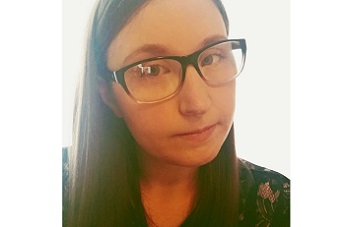Following recent updates to Pinterest’s chrome extension and Google’s new visual search API, Kay Brown, PR and Social Manager on behalf of Blueclaw, looks at how firms can make the most of search based on images rather than text.
While the launch of Google Home has many talking about voice search, the progression of visual search is rumbling in the background.
Previously announced as the next big thing in search in 2014, there has been too little advancement in this arena for consumers and businesses alike to really get on board but is this all about to change?
It was recently revealed that Google has an API in testing which will show specific scenes and videos based on a search query and Pinterest have been actively competing with the search giant through its own browser, Google Chrome – the Pinterest Google Chrome Extension allows you to highlight a specific area of a photo (i.e. flowers, heels, handbag) and shows you similar images from across the Pinterest platform.
This is just two ways in which our most used search and social platforms are trying to stay ahead of the search game but what will really define the success of visual search is if it becomes of use to consumers and business.
As a business, how could visual search affect you?
For many, visual search is one step on from clunky QR codes (remember them?) in that users can unlock more content and information by a consumer or audience holding their camera phone over a product or image. Blippar is the most well-known app for this with a range of partnerships with brands such as McDonalds and Emirates.
In terms of functionality, Blippar uses the user’s camera to connect with packaging/books/similar to unlock augmented reality engagement opportunities and games. They act as another way for brands to engage with their consumers after purchase.
But what about pre purchase?
The expected success of visual search three years ago was pinned on the perception of a seamless buying experience. For example, you may be shopping for a new dining table and take a few photos in a number of shops at a nearby retail park.
After a couple of days you have decided which one you would like to buy but it’d be more convenient for you to buy online and have it delivered so you identify the store by your photo and use that photo in their search function to find the product you want.
ViSENZE undertook a challenge along these lines in 2015 and it was found that consumers found the product they wanted in 1/9 of the time it took to find it via written search.
That’s a significant time saving and as well as offering a good user experience for the customer, it potentially offers a new opportunity for tracking offline to online conversions which in turn will allow businesses to have a greater understanding of their customer purchase journeys.
Another benefit of image search is avoiding lost sales as a consumer can identify a product quickly to check if there is further size availability online and make an immediate purchase. Let’s face it, I don’t think many of us would wish to use text to search for black trousers or basic grey dress on a retailer’s website which has 1,000’s of products but we may think differently if we could do a quick image search.
Similarly, if a consumer uploaded an image of a product from a different retailer it gives an opportunity for a business to unlock ‘you may like’ functions to showcase a product range that your everyday consumer may not have found via a product description.
This would be particularly beneficial for independent retailers who have potential customers who are interested in shopping locally but have a specific product in mind.
However, while visual search has the potential to unlock improved user experience, quicker sales and collate further data in regards to the offline to online purchase journey, it is also heavily reliant on the relevancy of results and both consumers and businesses understanding keywords and search intent.
This in itself is an issue as too many businesses do not adequately maintain their on-site SEO, particularly when it comes to images and video. In order for businesses to truly optimise visual search they will need to be committed to optimising their image tags and maintaining visual search capabilities in line with search engine updates.
By Kay Brown, PR and Social Manager on behalf of Blueclaw a digital marketing agency in Leeds specialising in search, PPC and social.

